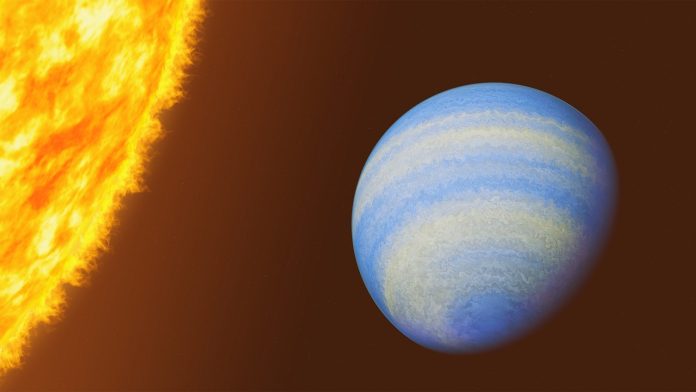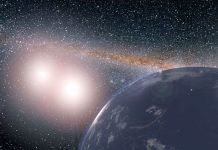
A new study from Johns Hopkins University using data from the James Webb Space Telescope has uncovered a surprising feature of a nearby exoplanet, HD 189733 b: it smells like rotten eggs.
This stench comes from trace amounts of hydrogen sulfide in the planet’s atmosphere.
HD 189733 b, a gas giant similar in size to Jupiter, has been known for its extreme weather.
Now, the discovery of hydrogen sulfide adds another strange characteristic to this already infamous exoplanet.
Hydrogen sulfide is a molecule that not only smells bad but also provides scientists with important clues about the role of sulfur in the formation and composition of planets beyond our solar system.
“Hydrogen sulfide is a major molecule that we didn’t know was there. We predicted it would be, and we know it’s in Jupiter, but we hadn’t really detected it outside the solar system,” said Guangwei Fu, the lead researcher and an astrophysicist at Johns Hopkins.
Although HD 189733 b is too hot to support life, finding hydrogen sulfide on this planet is an important step toward understanding how different types of planets form.
The team also measured other key molecules in the planet’s atmosphere, including water, carbon dioxide, and carbon monoxide.
These measurements help scientists understand the planet’s composition and the role of sulfur in building more complex molecules.
Located just 64 light-years from Earth, HD 189733 b is the closest “hot Jupiter” that astronomers can observe passing in front of its star.
This proximity makes it a valuable target for studying exoplanetary atmospheres. Since its discovery in 2005, HD 189733 b has been a benchmark for these types of studies.
The planet is about 13 times closer to its star than Mercury is to the sun and completes an orbit in just two Earth days.
With scorching temperatures around 1,700 degrees Fahrenheit, HD 189733 b is notorious for its extreme weather, including sideways-raining glass in winds of 5,000 mph.
The James Webb Space Telescope has provided scientists with new tools to detect hydrogen sulfide and measure sulfur levels in gas giants beyond our solar system. “Say we study another 100 hot Jupiters and they’re all sulfur enhanced.
What does that mean about how they were born and how they form differently compared to our own Jupiter?” Fu wondered.
The new data also revealed that HD 189733 b lacks methane, despite previous claims of its presence.
Additionally, the team measured levels of heavy metals similar to those found on Jupiter. This information helps scientists understand how a planet’s metallicity correlates to its mass.
For instance, less massive giant icy planets like Neptune and Uranus have more metals than gas giants like Jupiter and Saturn.
This suggests that Neptune and Uranus accumulated more heavy elements during their formation. Scientists are now testing whether this pattern holds true for exoplanets as well.
In the coming months, Fu’s team plans to track sulfur in more exoplanets to understand how high levels of this compound might influence their formation near parent stars.
“We want to know how these kinds of planets got there, and understanding their atmospheric composition will help us answer that question,” Fu said.
Source: Johns Hopkins University.



